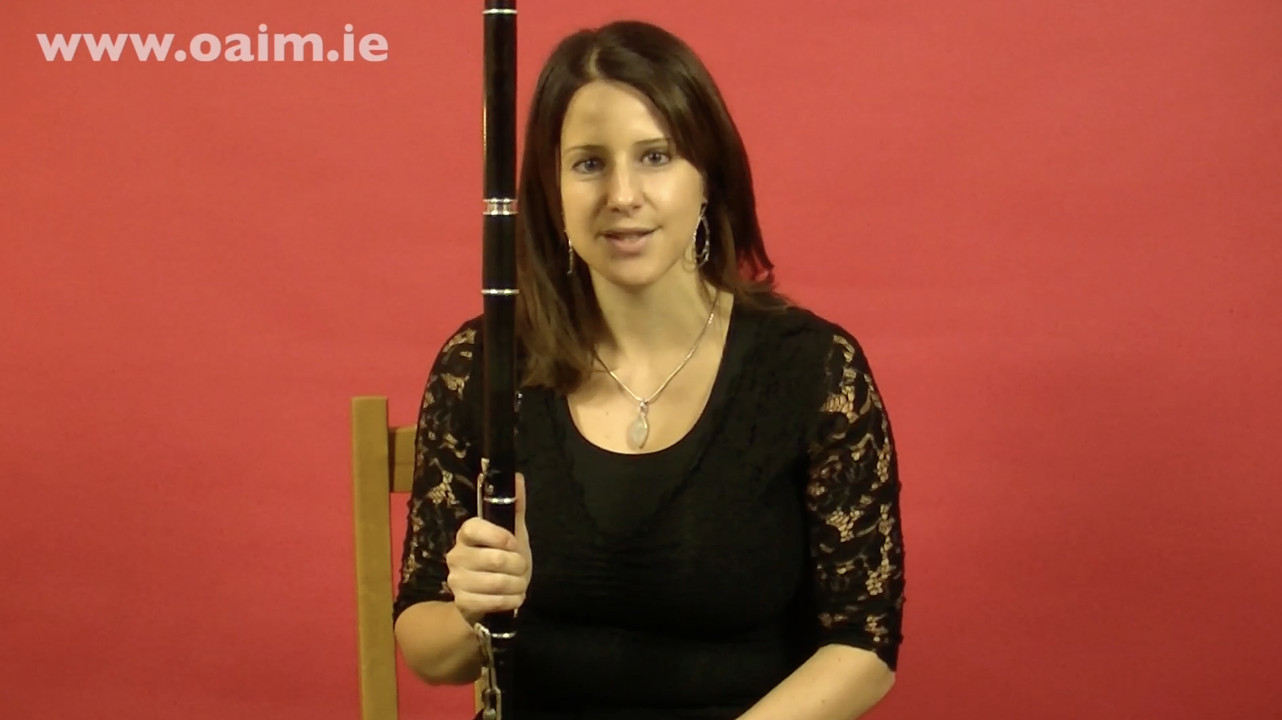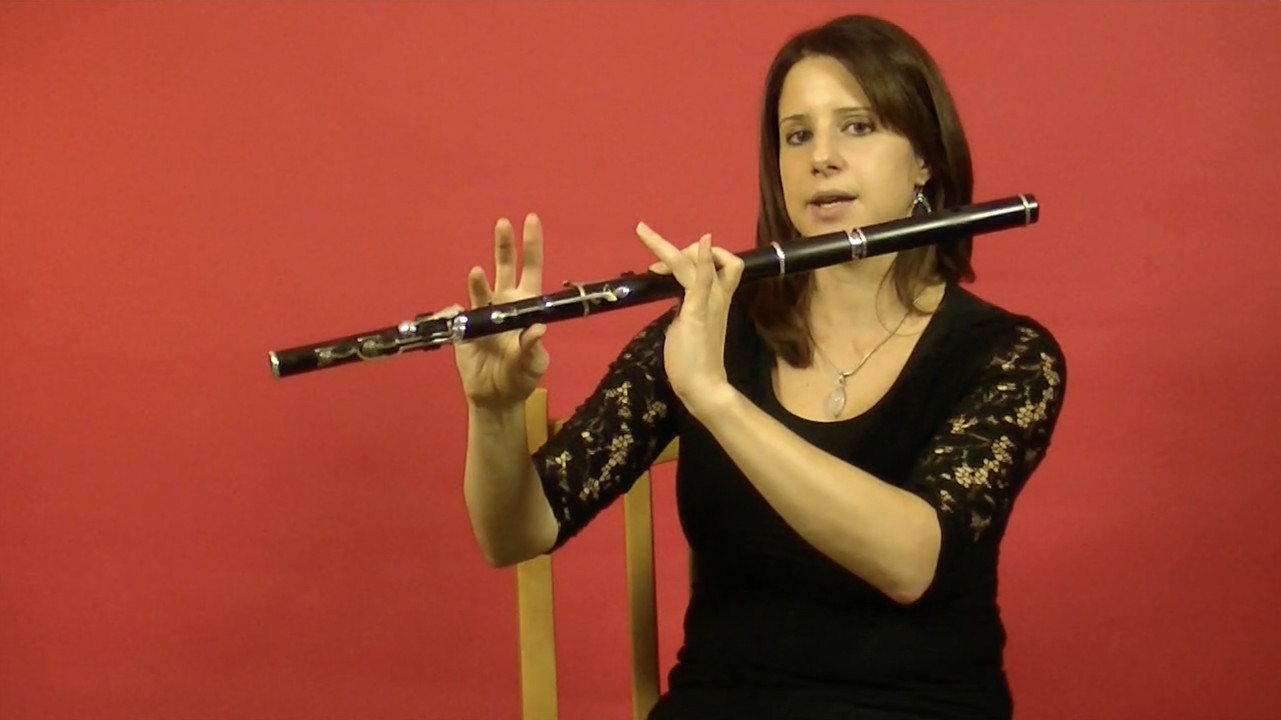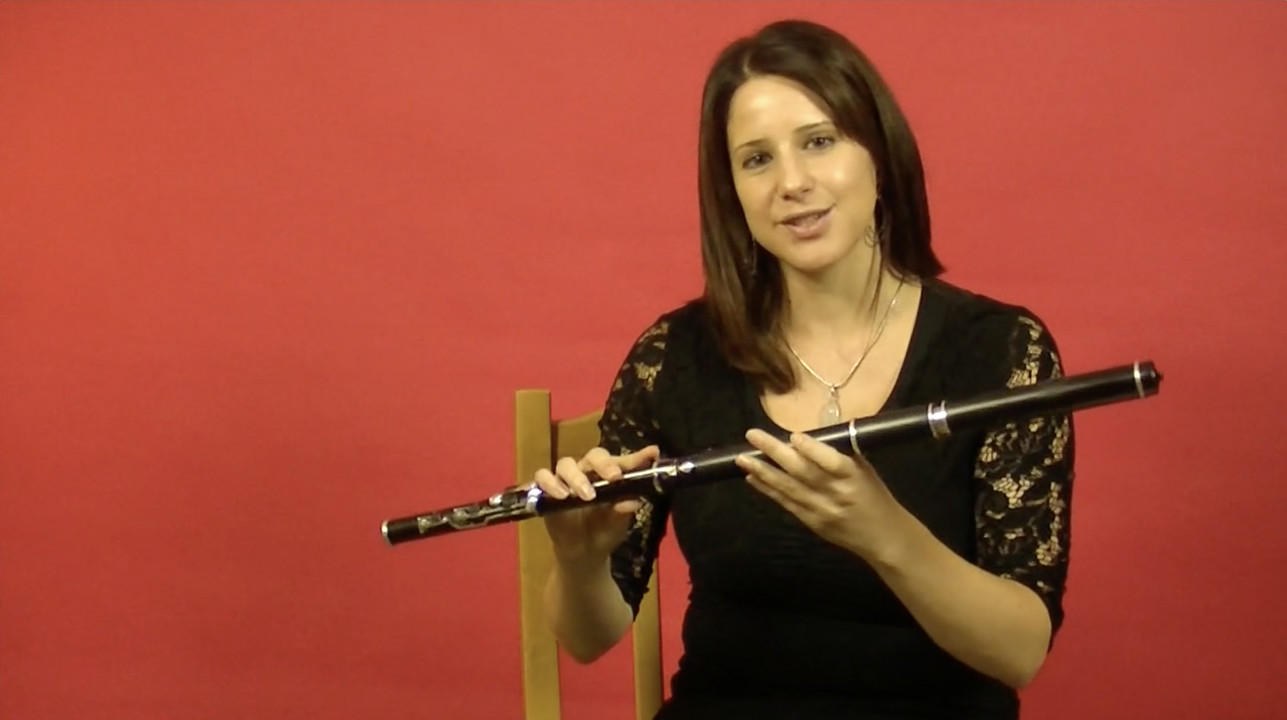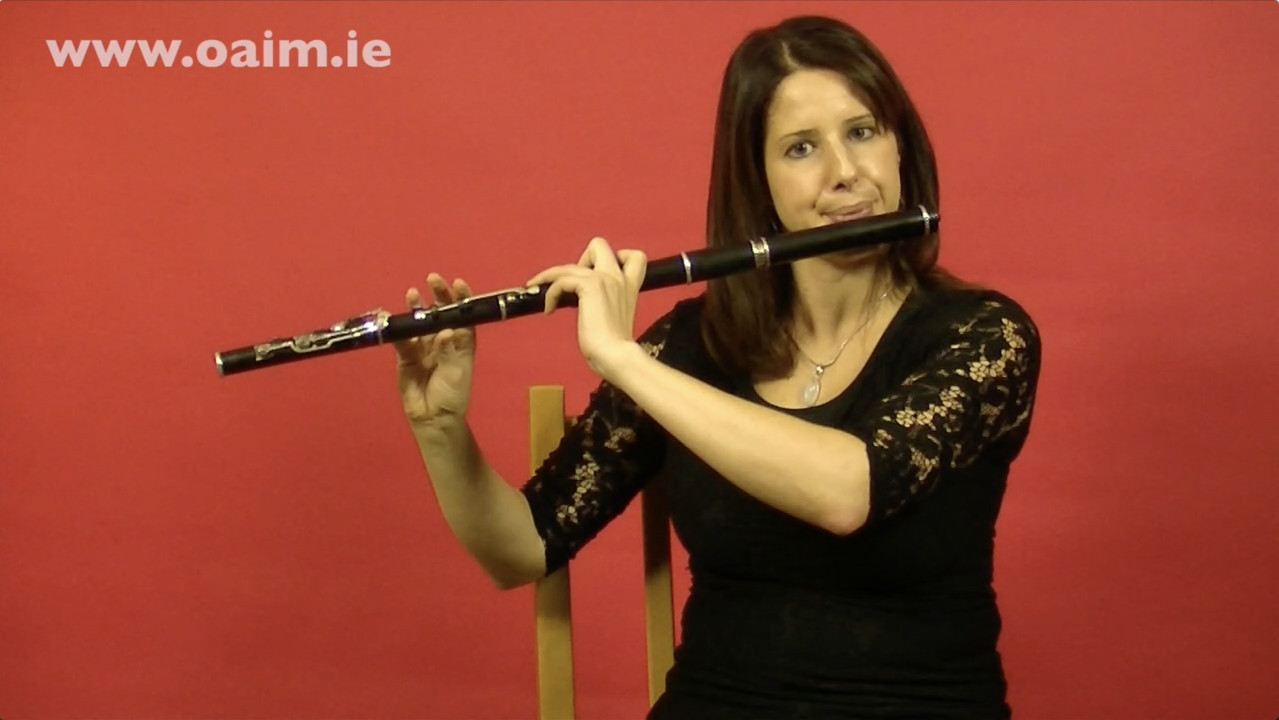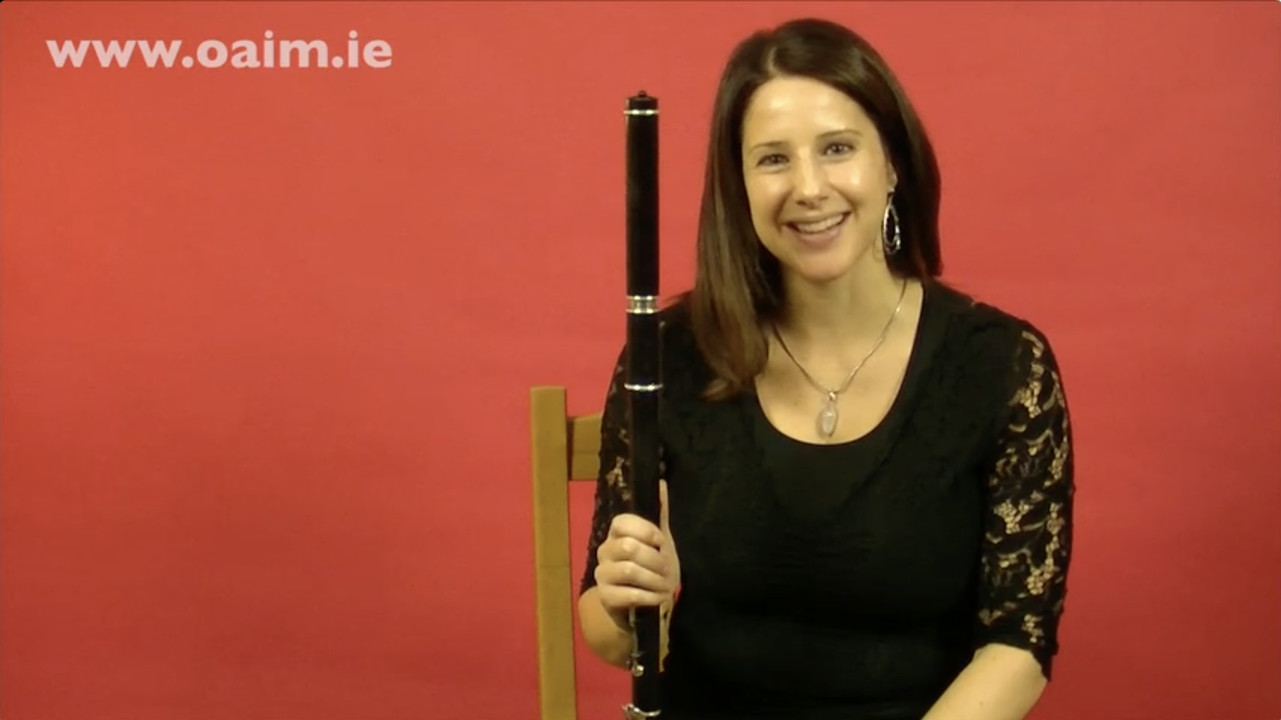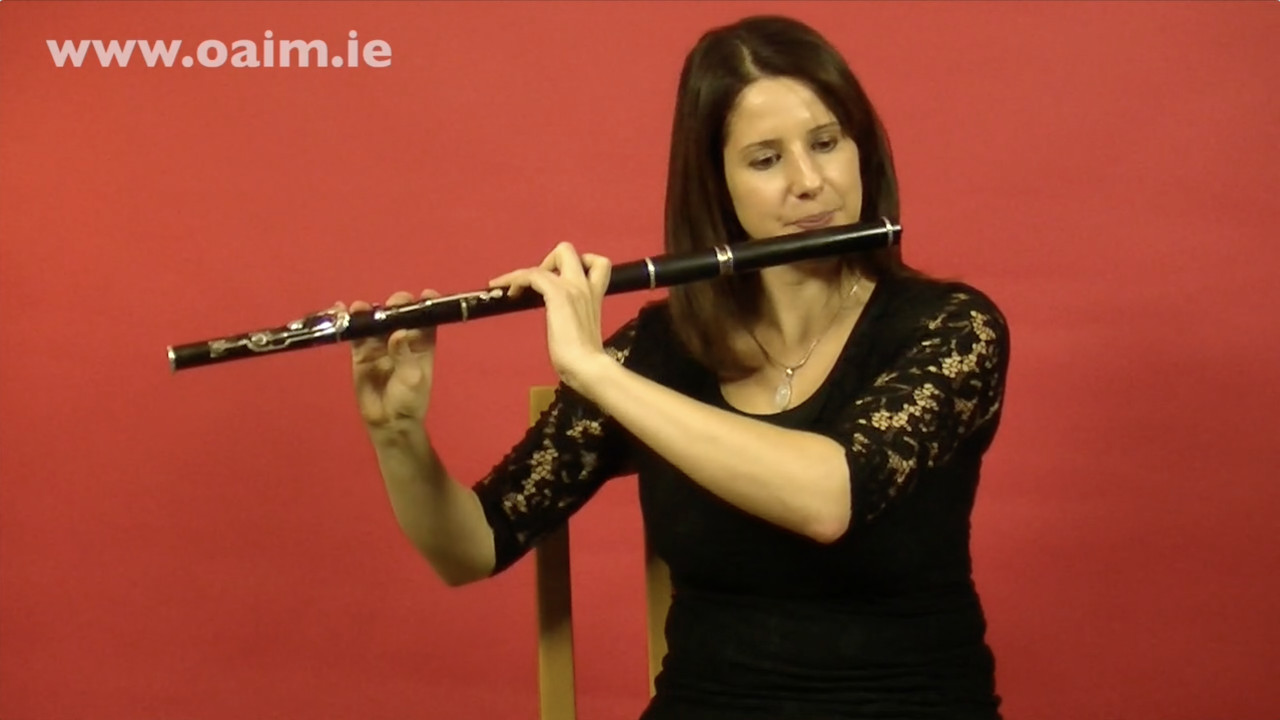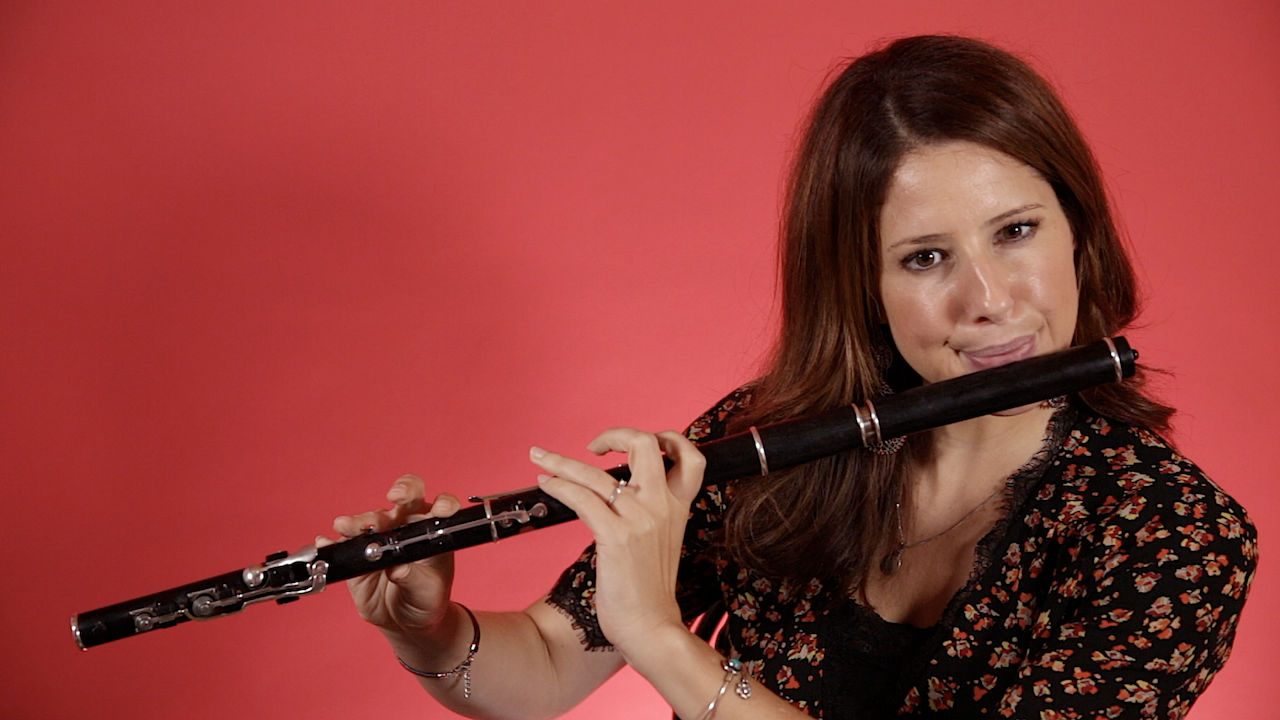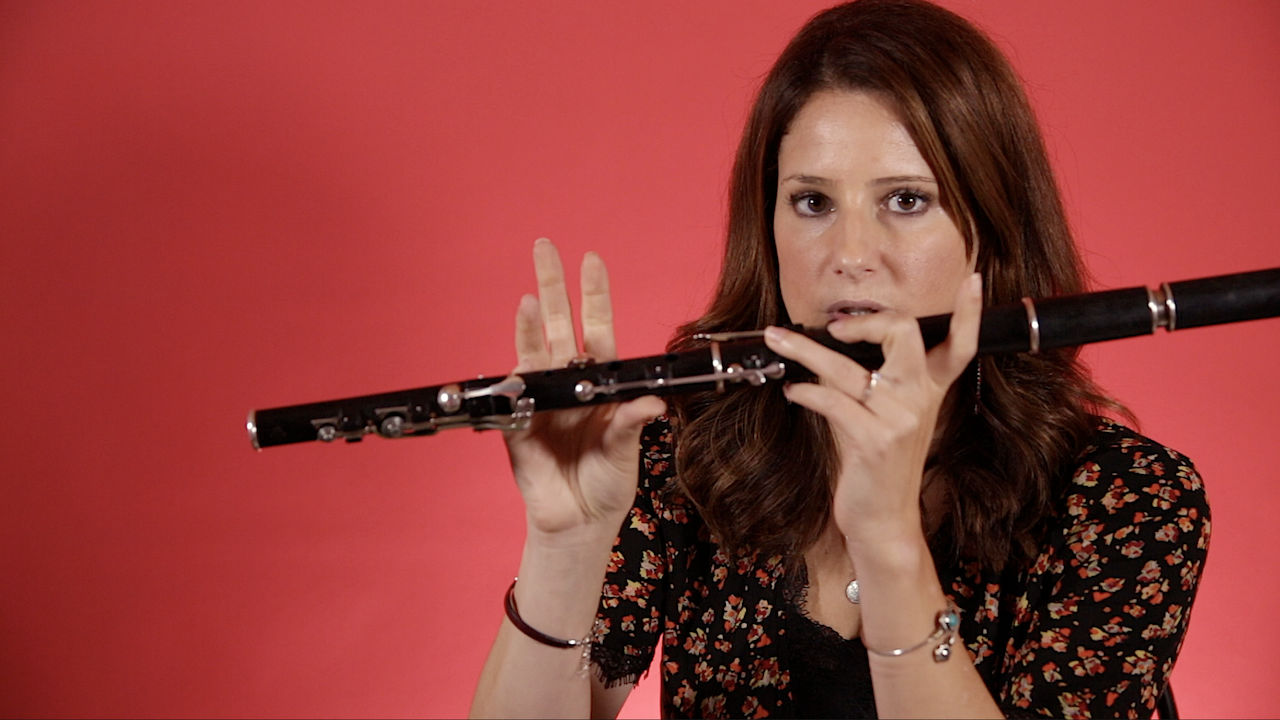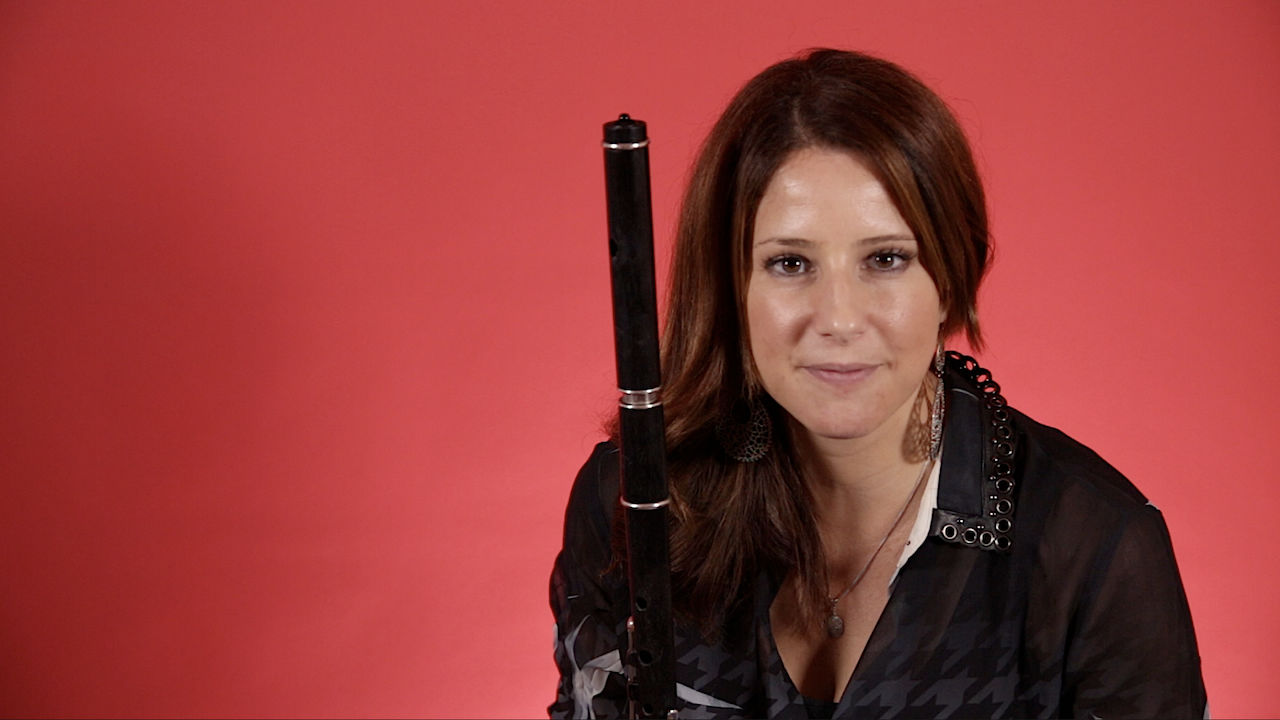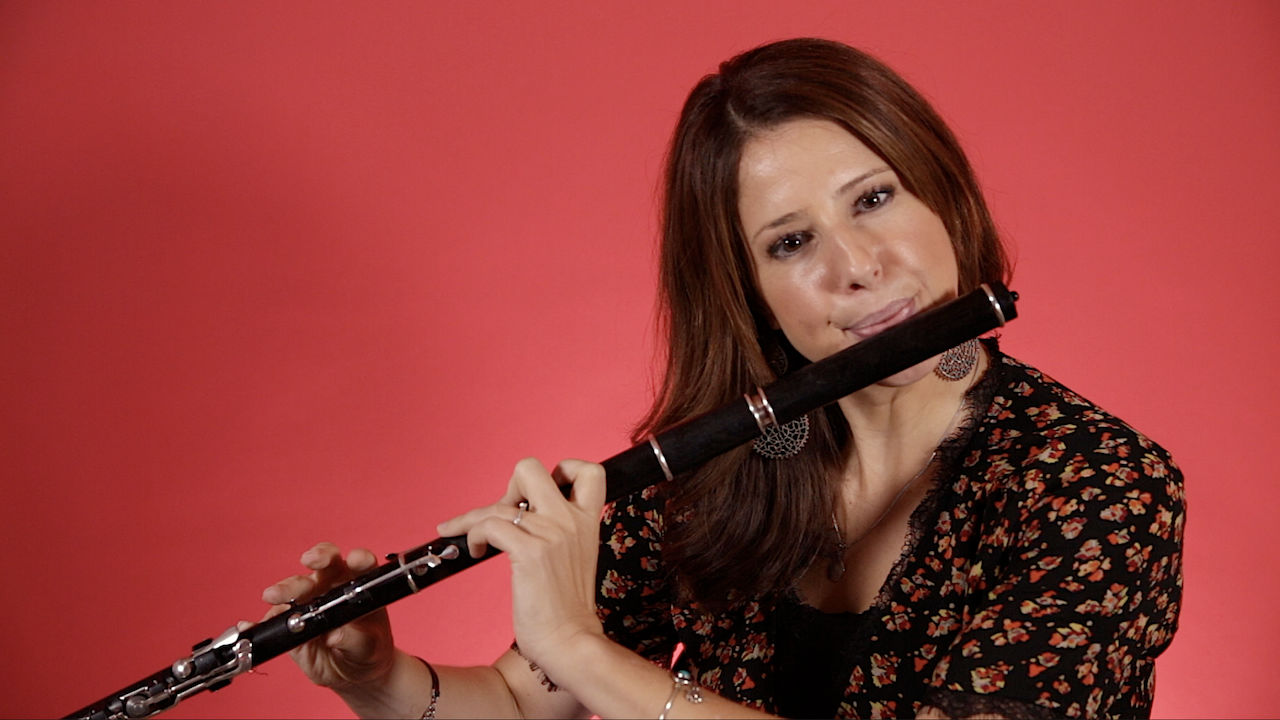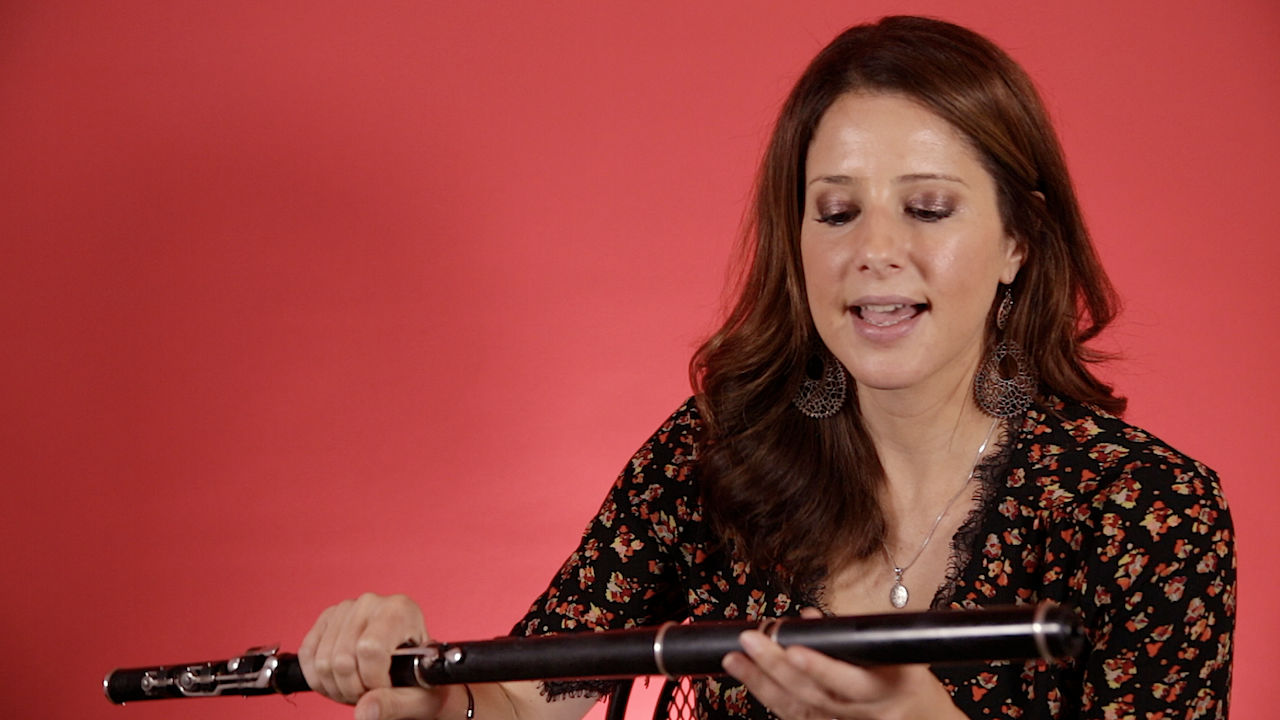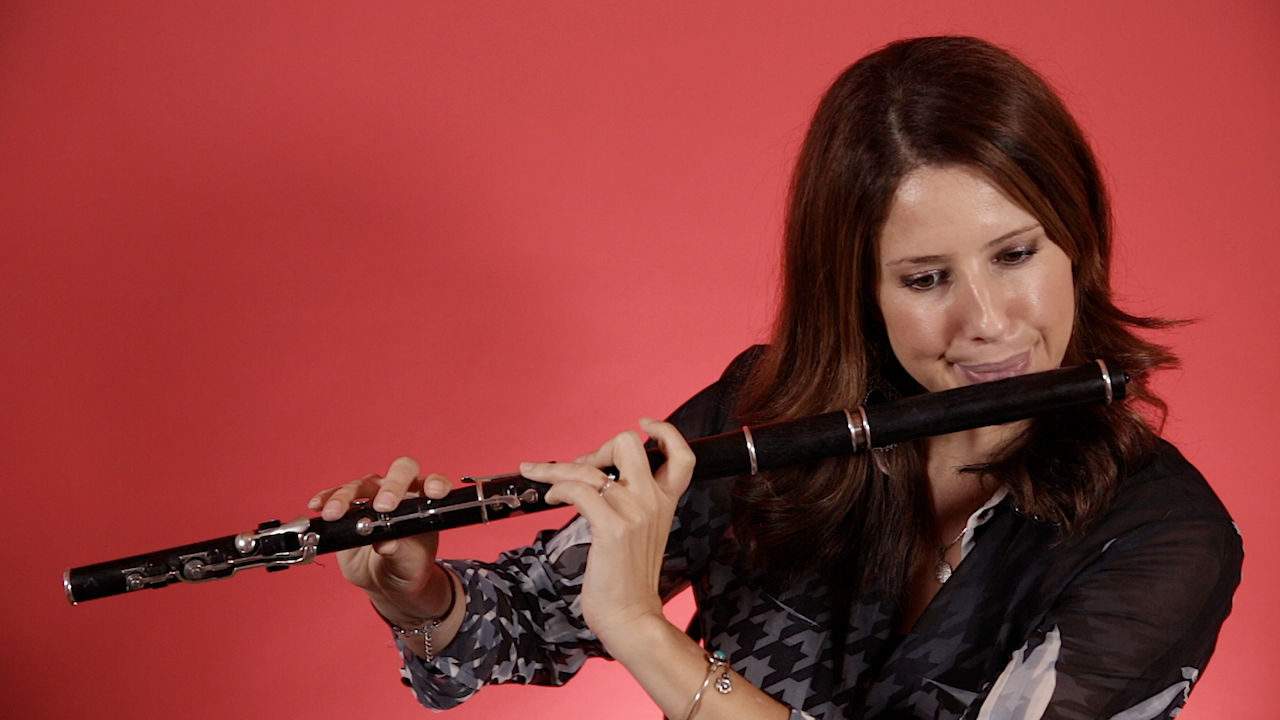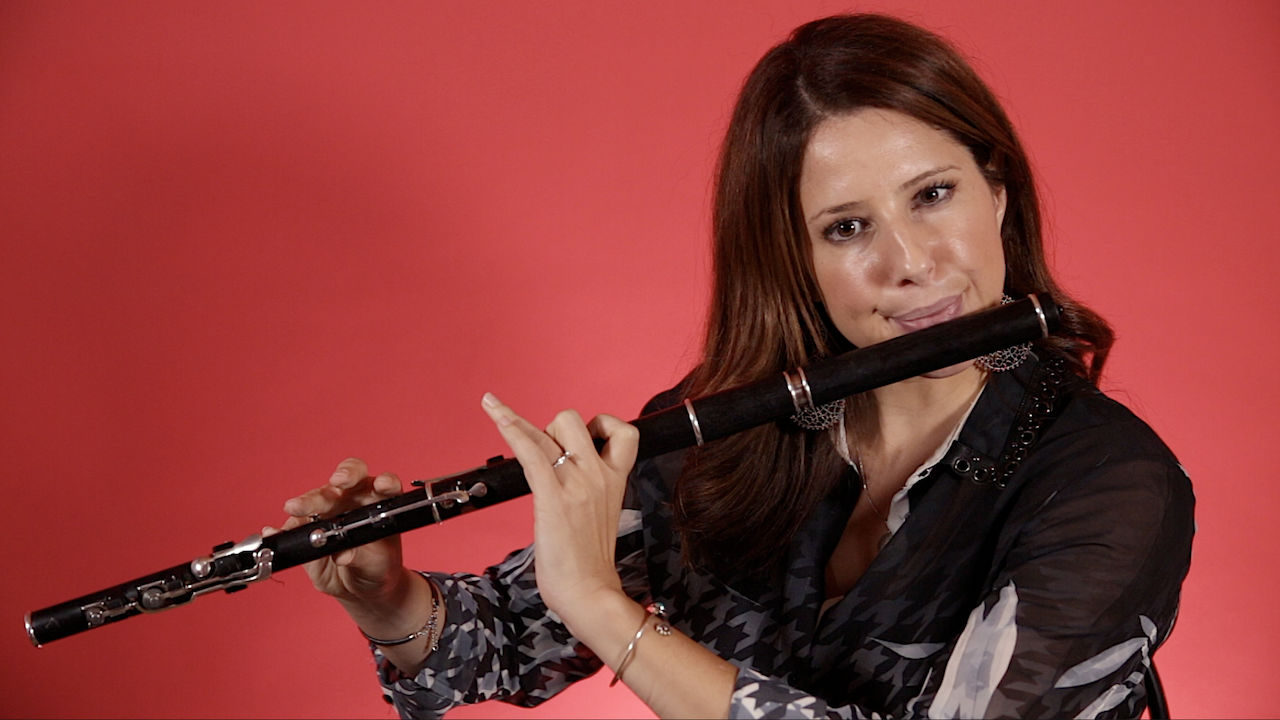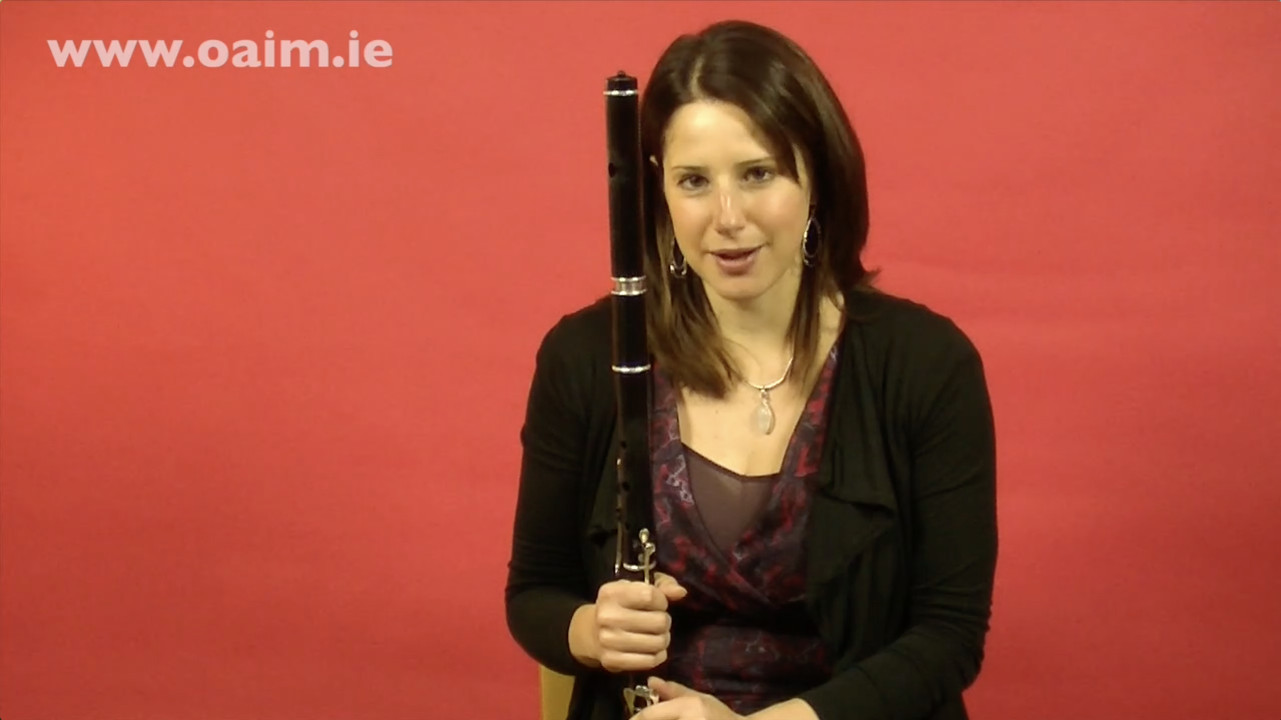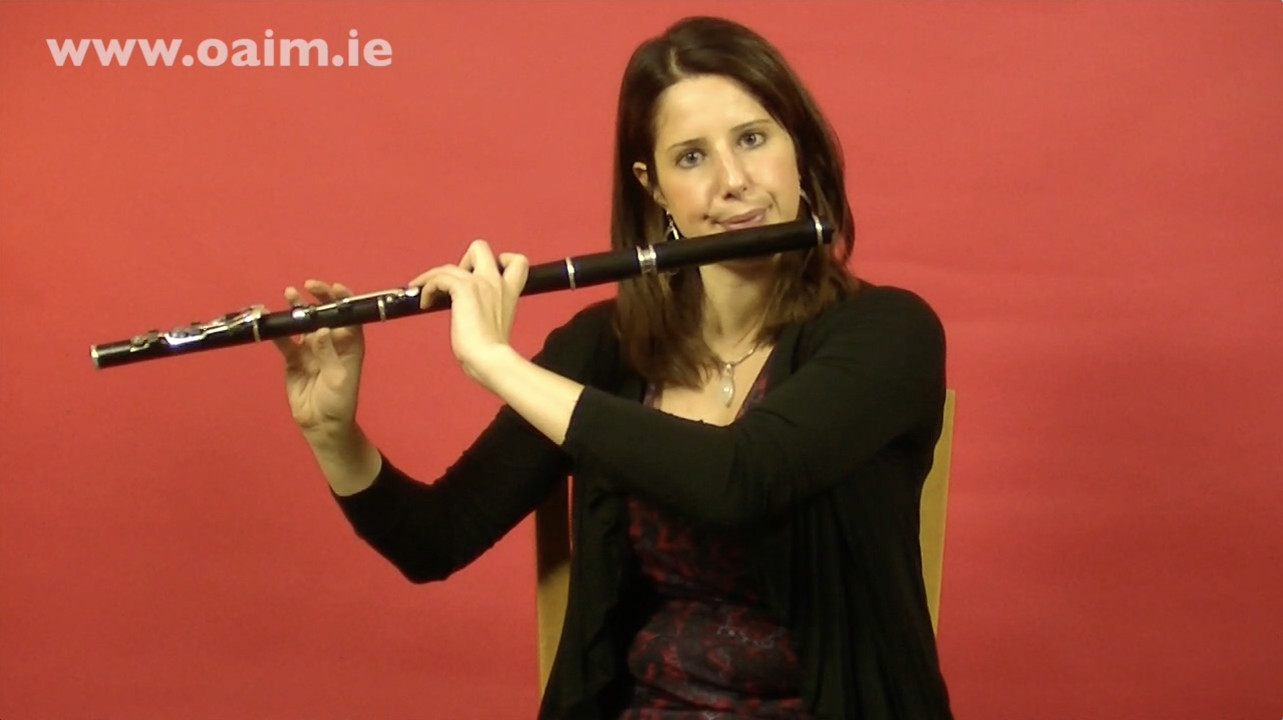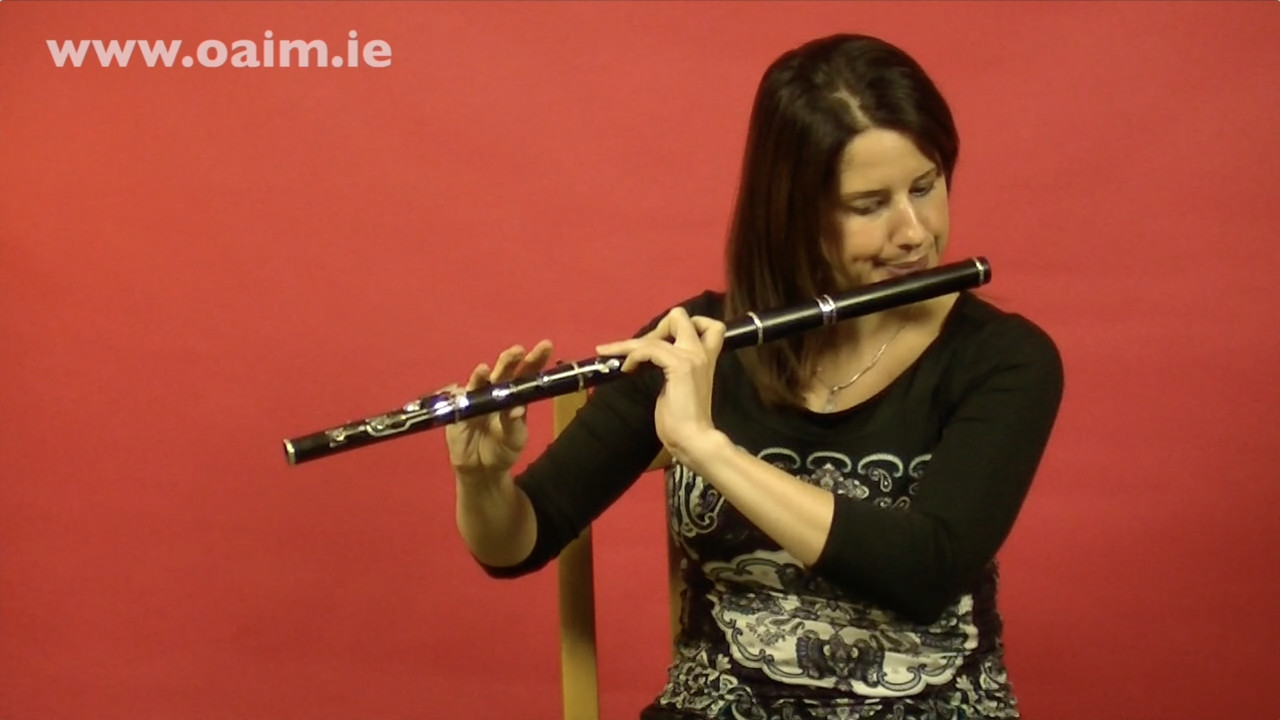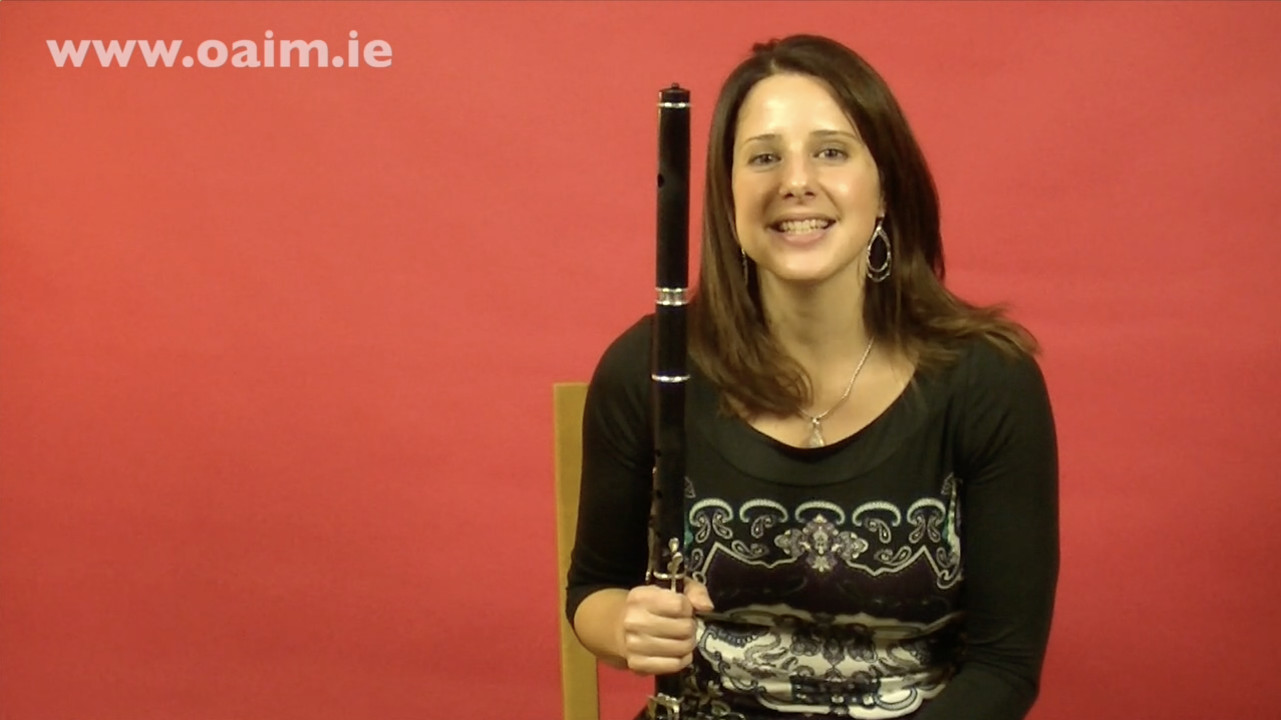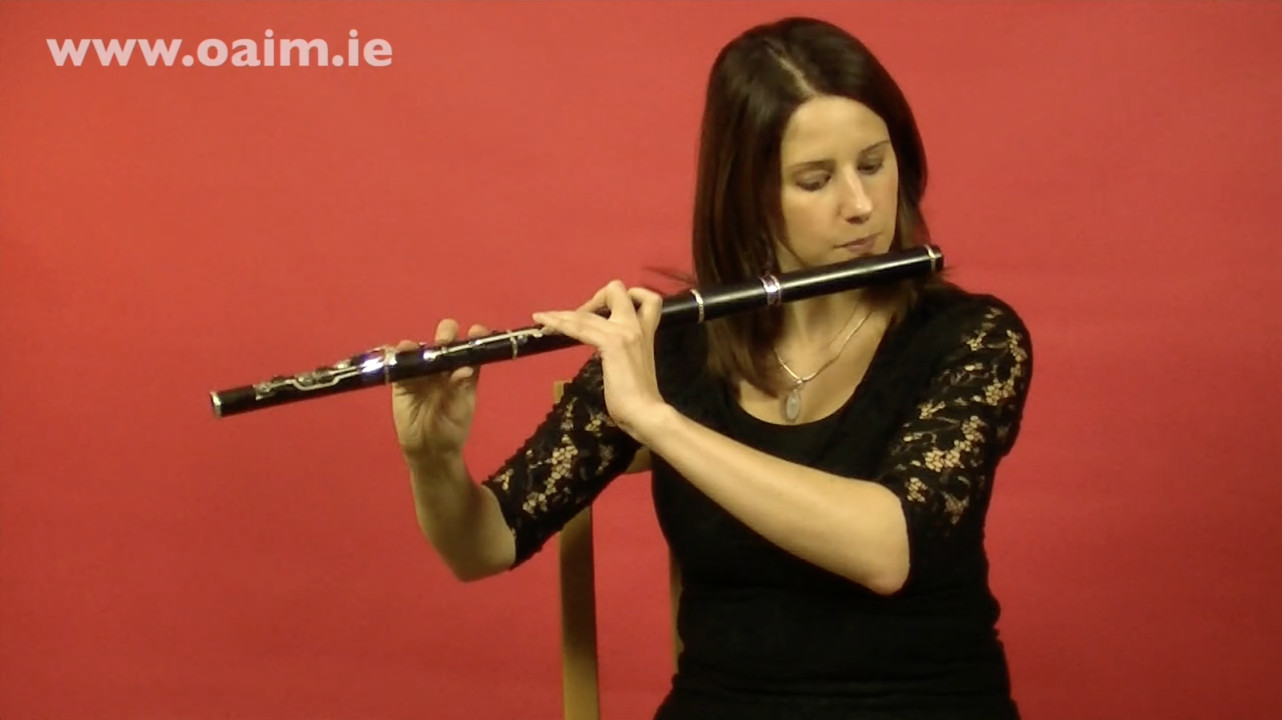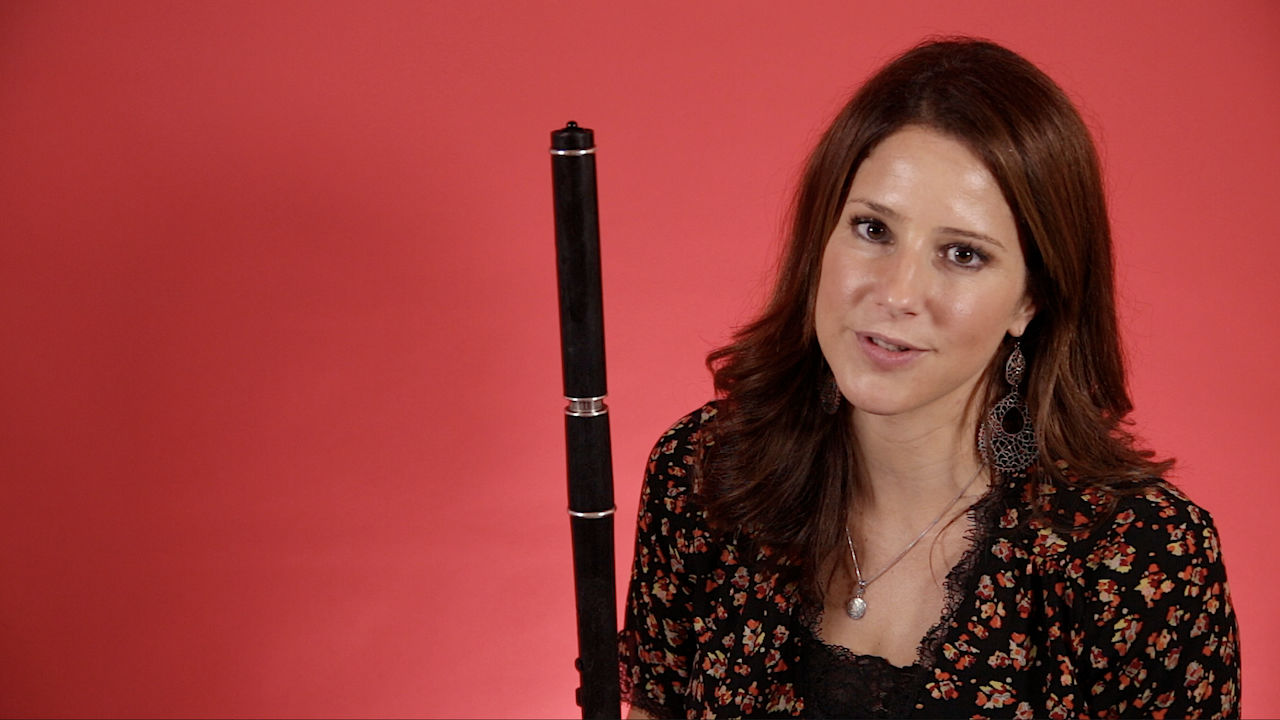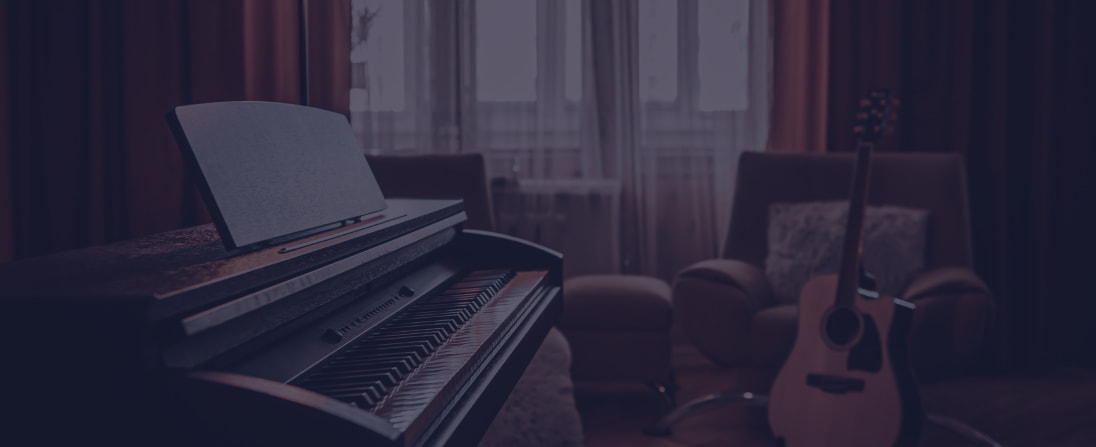The Flute Basics course is aimed at the absolute beginner flute player. It begins with the foundational steps of how to hold the instrument as well as an in-depth instruction in embouchure, which is the refined craft of blowing air into a wood instrument and involves the correct positioning and use of the lips, facial muscles, tongue, and teeth to produce the sound. So mastering embouchure is a vital skill for anyone new to the flute and the tutor does a beautiful job in explaining this with the support from a close camera angle to highlight the subtleties.
Once you can correctly blow into the flute you can move on to learning the scales of D and G. Essential instruction is given on when to take a breath in a tune and what technique to use in taking a breath, tips are also given on articulation, ornamentation, flute maintenance and how to gain clarity of tone in both the high and low register.
Demonstrating a deep understanding of the challenges involved in learning the flute, the tutor also addresses the most common issues that give so many flute players difficulties.
The traditional Irish tunes taught in this course are:
- Tripping To The Well
- The Rattlin' Bog
- Báidiín Fheilimí
- Buachaill Ón Éirne
- The Foggy Dew
- The Glenside Polka
- The Rakes Of Mallow
- Gander In The Pratie Hole
- The Rocky Road To Dublin
- Danny Ab’s
- The Butcher’s March
- The Rambling Pitchfork
- O’Keefe’s Slide #1
- O’Keefe’s Slide #2
- The Boys Of Bluehill
- Humours Of Whiskey
- The Sunny Banks
- Jimmy Duffy’s #2
- The Munster Buttermilk
- The Heathery Breeze
- Brendan Tonroe’s
- McGivney’s Fancy
- The Crosses Of Annagh
- O’Gorman’s Reel
Recommended Flute for Beginners
Much like the tin whistle, you need to have a flute in the key of D to play the vast majority of Irish tunes. And, much like any instrument, a good quality beginners instrument is essential to making your job as easy as possible. Affordable instruments can be found in the €600-1000 range and we would advise starting out on either a keyless flute or one with only a maximum of three keys (e.g. F, Bb and C or G#). Keyless flutes from Martin Doyle are in the lower end of this range whereas the same ones from Patrick Olwell will be in the higher bracket. Both are fantastic instruments. You would want to avoid buying cheap flutes online or in chain music shops as these are extremely difficult to play even for professionals. Another option is the go for a polymer/delrin flute from a maker such as Desi Seery (RIP) or Michael Cronnolly (M&E Flutes). These are less maintenance and obtain a tone that is almost identical to a wooden instrument. The disadvantage, however, is that they can be quite heavy and cumbersome making it a challenge for a beginner.
When choosing an instrument it is important to make sure that the flute you choose is relatively easy to play. If the instrument is extremely difficult to blow then this might deter you from playing the instrument. There are practice flutes that you can buy from around €100-€200, for example Hammy Hamilton has metal practice flutes which are okay but cannot be tuned so they are only really suitable for solo playing—which is fine when you are just a beginner. There are also some plastic flutes available but there can be intonation issues with these flutes. Try to get the help of a teacher or flute player to play the flute before you buy it just to check that the blowing is not extremely hard and that the intonation is okay. Other than these practice flutes, the next step would be around €600-€800 which would be a keyless flute from a flute maker, which would have a certain amount of waiting time, or something like a De Keyzer wooden flute that can be bought in a lot of music shops.
We usually recommend Martin Doyle flutes for beginners in the key of D. They are by far the best value for money wooden flutes on the market. If that’s too expensive buy a good Delrin one.
Advice Starting Out with the Flute: Posture, Holding and Tone
Enjoy the journey, every step of the way. Don’t progress to the next lesson until the current lesson is mastered. The key to flute playing lies in the embouchure, so you may need to stay at that lesson for a while before moving on.
1. Posture and Holding
You must sit up straight, the flute is to be kept off the shoulder and shoulders must be kept down. Keep your neck straight and bring the flute to the mouth, do not bring your mouth to the flute as this will change you posture. Work on your balance, try not to grip the flute, everything should be relaxed. Thumbs should be behind your second fingers; relax your arms with your elbows pointing the floor.
2. Tone
Work on your embouchure, which is the shape of you mouth when blowing. You should have a small pinhole of air blowing across the mouthpiece. Keep your embouchure nice and tight so no air escapes. If you find it hard to fill the whole flute to start, take off the head joint and just use this to get used to making a sound. For the low octave, tuck in the lower jaw and blow. Airflow is directed in a more downward motion, aiming at the lower cutting edge of the embouchure hole. For the high octave push out the lower jaw a little, tighten embouchure a little more and blow gently. Airflow is directed at a higher angle of the embouchure hole. Lifting the head a little can help here. You are recommended to experiment with your embouchure and directional flow, as every flute player is different. Also practice in front of a mirror so you can see your embouchure and always work on trying to get a nice clear tone. If your tone is hazy, then there is air escaping from your embouchure.
It is highly recommended to be familiar with any tune you are learning before you begin learning how to play it, so download the mp3 file and listen to it frequently first before beginning the tutorial on it.


